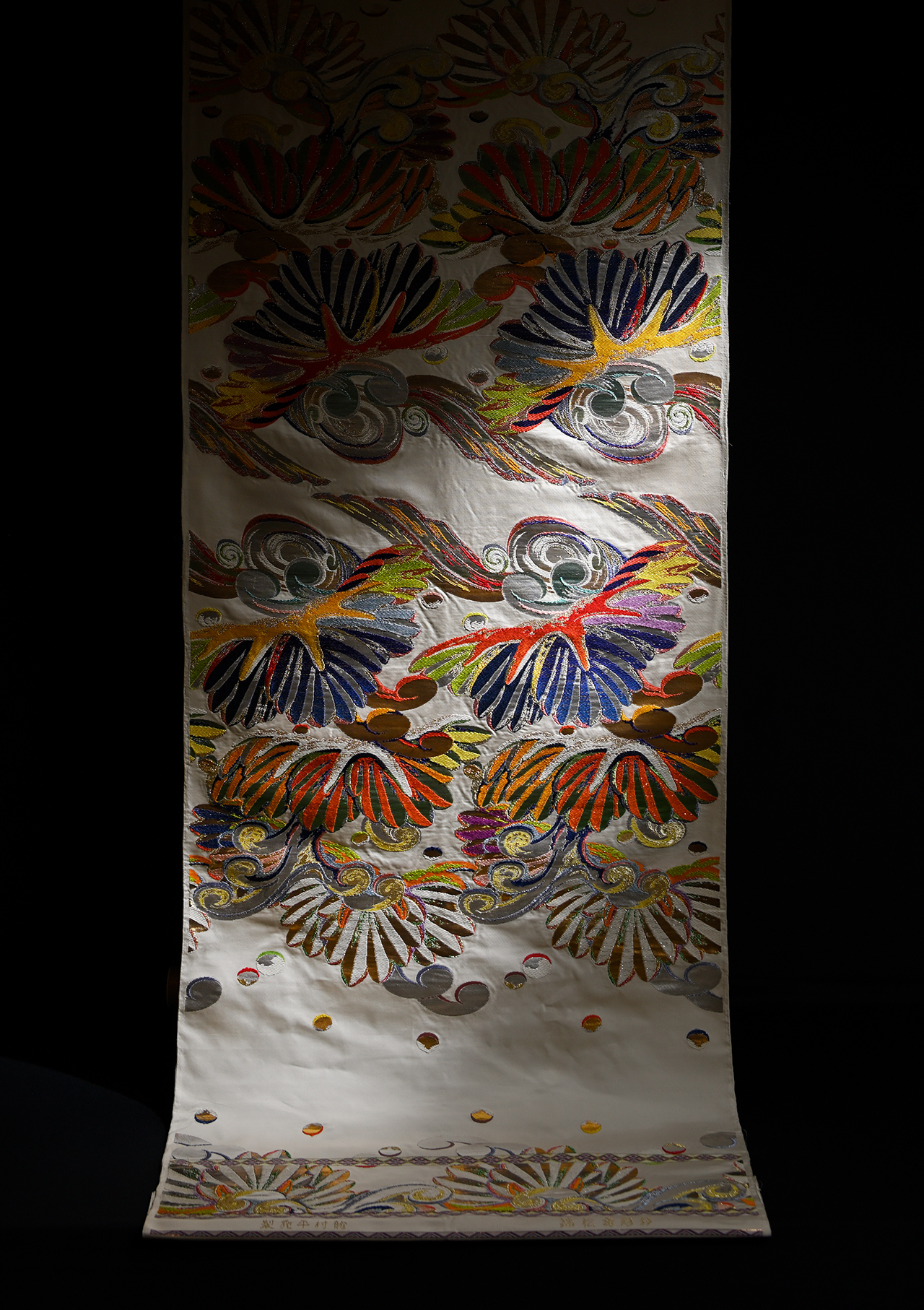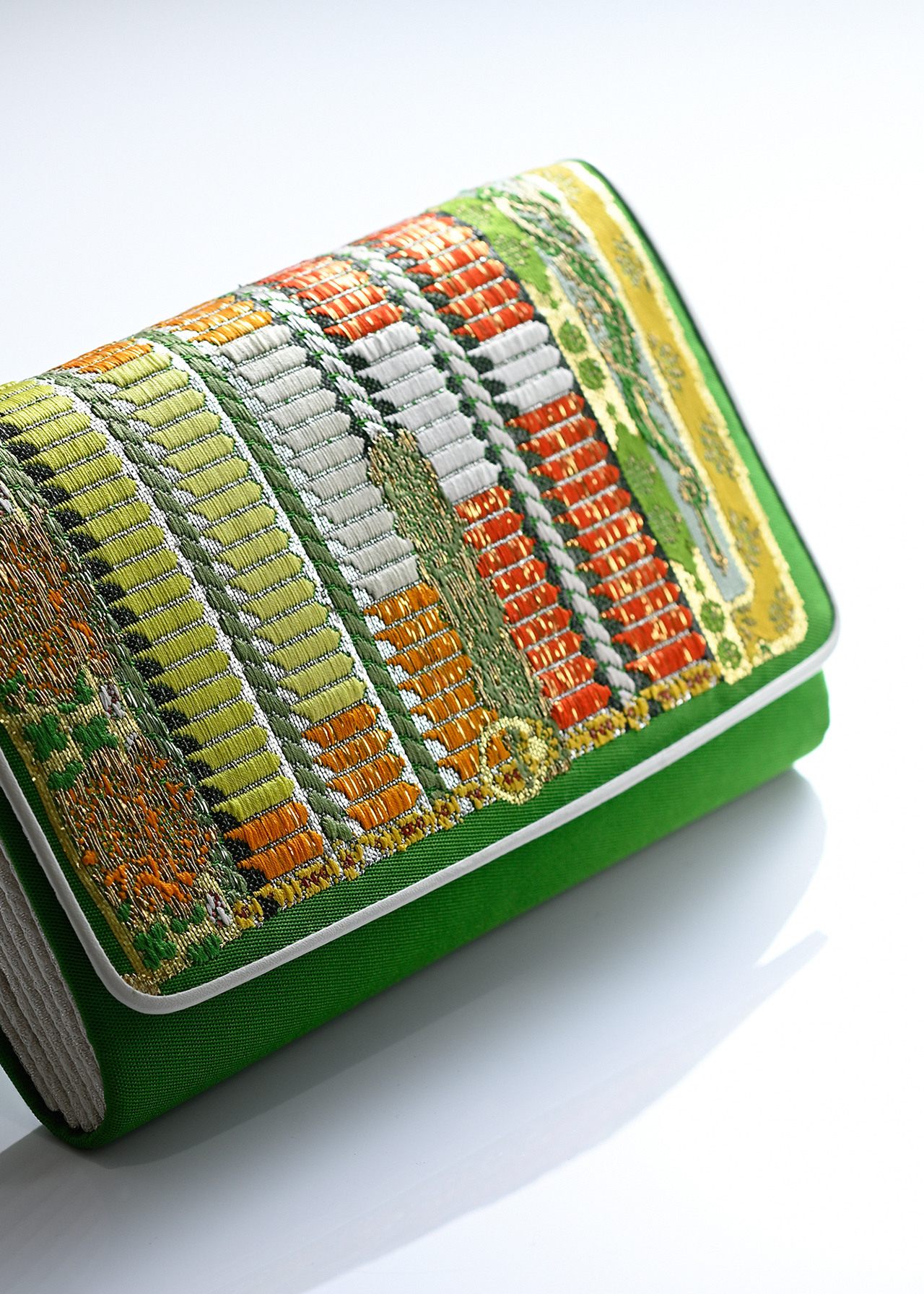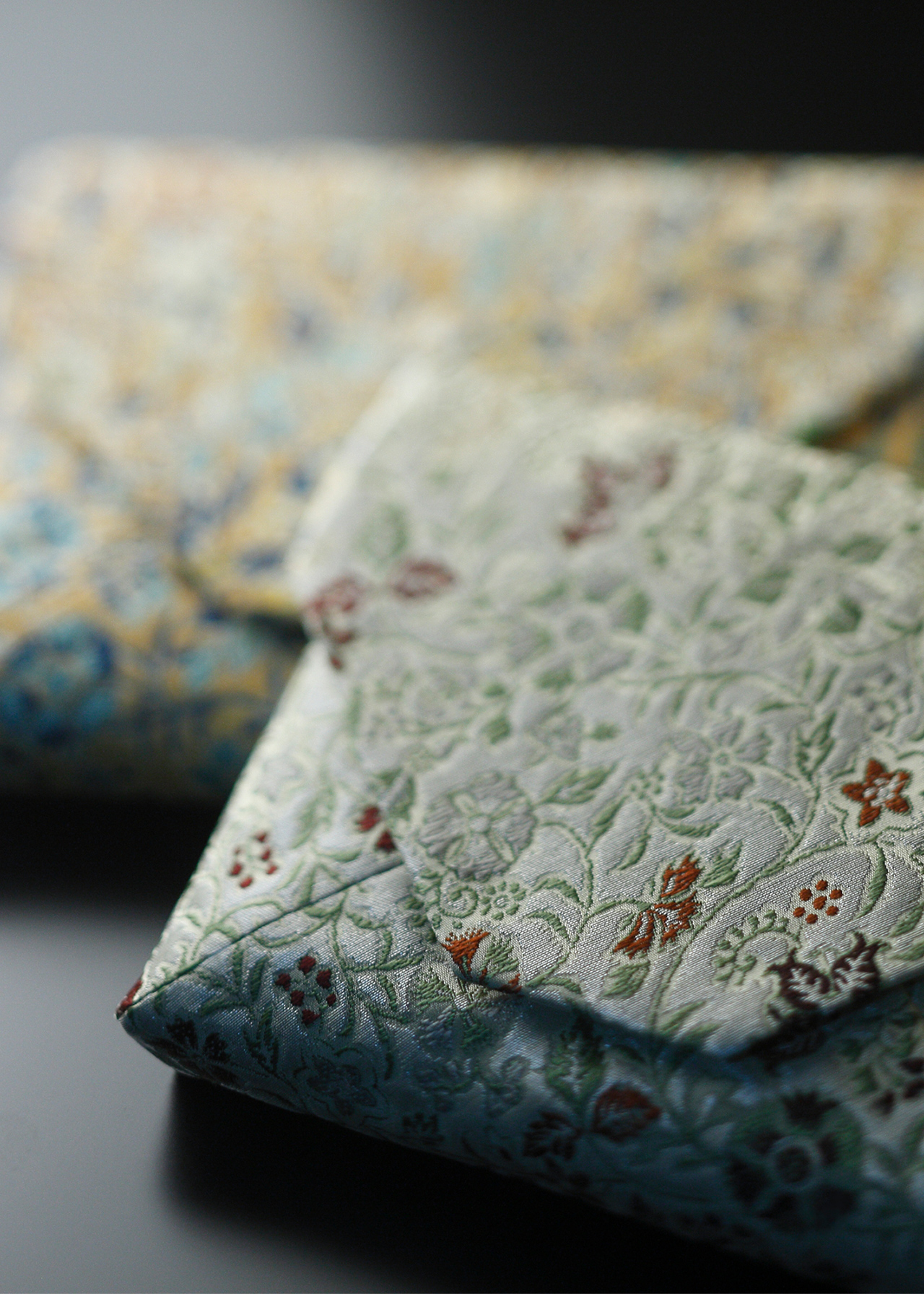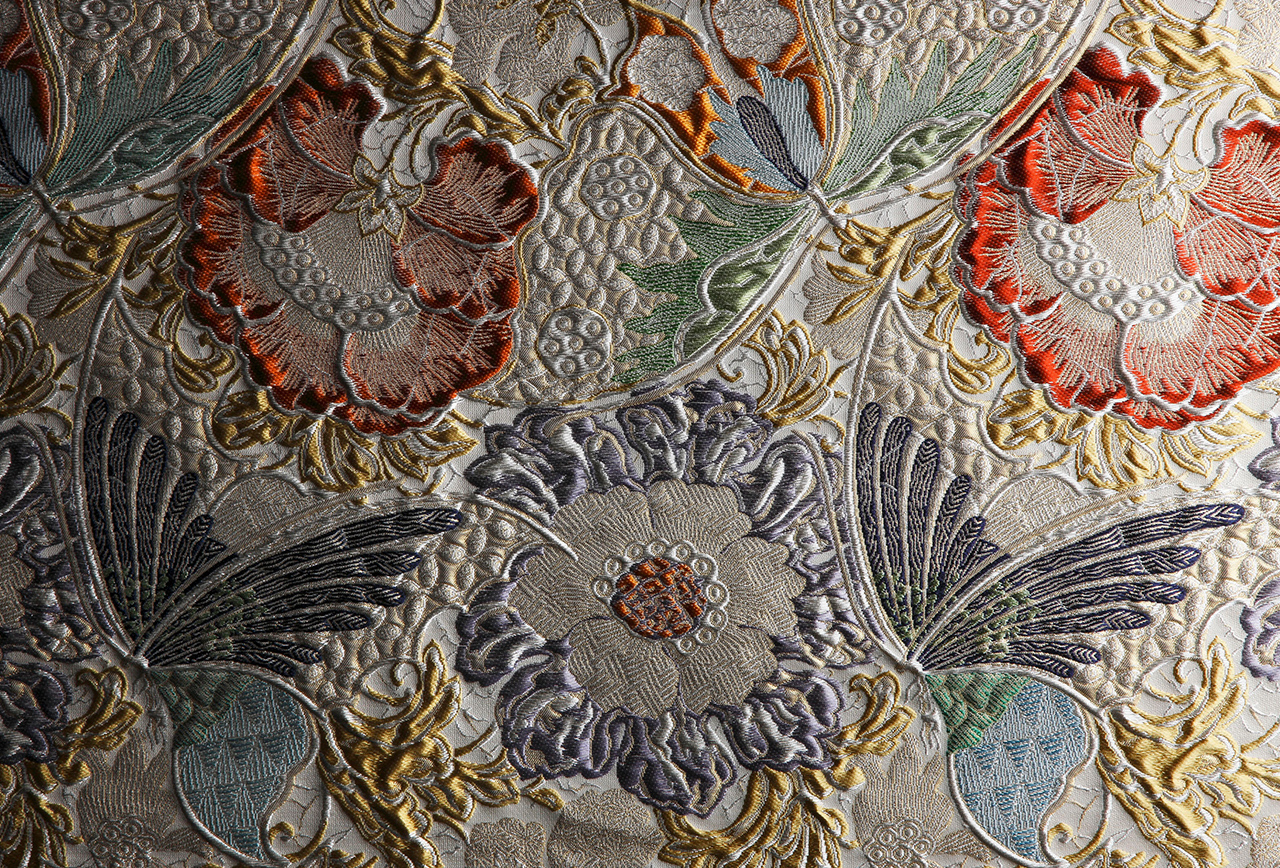西陣織 西陣織工業組合
NISHIJIN-ORINISHIJIN WEAVING 1
1
- 袋帯。
日本の絹織物の歴史は、5〜6世紀頃、中国大陸からの養蚕と絹織物の技術渡来に始まります。8世紀に京都に都が置かれると、絹織物の生産を担う役所「織部司」が朝廷によって設置され、国営の形で織物業が発展しました。西陣織の呼称は、1467年から11年間、京都の街を東西に二分した応仁の乱の後、職人たちが再び集まって織物業を始めたのが、かつての西軍の本陣が置かれた場所だったことに由来します。室町時代末期(16世紀後半)には、現在も西陣織の特徴である先染めの糸を使い、色柄や模様を織り出す紋織の技術を確立させ、江戸時代前期(17世紀)までは高級織物の産地として興隆を極めます。明治時代(19世紀)には、いちはやくフランスに人材を派遣、リヨンで発明されたジャカード織を取り入れて近代化に成功しました。現在では、きもの地、帯地、和装小物からネクタイやショールなどの洋装小物、加えて壁掛けやソファの張り地、カーテンなどのインテリア・ファブリック、さらに車や電車、飛行機などの座席の張り地など、幅広い用途の織物を生産しています。
The history of Japanese silk weaving begins in the 5th and 6th centuries with the introduction of silk farming and weaving technology from the Chinese mainland. When Kyoto became the capital in the 8th century, the Imperial Court established an office devoted to silk fabric production (Oribe Tsukasa), so the textile industry developed under state control. The name Nishijin is derived from the district where the former headquarters of the Western (Nishi) army (jin) was located. It was here that craftsmen gathered and restarted the textile industry after the Onin Rebellion had divided the city into east and west for 11 years starting in 1467. At the end of the Muromachi period (2nd half of the 16th century), the characteristics of Nishijin-ori (Nishijin fabric) were established: weaving together many types of colored yarn to create spectacular decorative patterns. The Nishijin district remained the production center of high-quality textiles until the early Edo period (17th century). During the Meiji era (19th century), the trade flourished again when craftsmen brought back modern weaving technologies from France, including the Jacquard loom invented in Lyon. Currently, Nishijin-ori is given a wide range of uses from kimonos, obi and accessories to furniture (wall hangings, sofa upholstery, curtains and other interior fabrics) to seat upholstery for cars, trains and airplanes.
 2
2
 3
3
 4
4
- :初代龍村平藏代表作の袋帯「威毛錦」を使ったバッグ。昭和13年ベルリンでの「第一回国際手工業博覧会」で金賞を受賞。
- : 金糸・銀糸を使用した高級織物「早雲寺文台裂」の数寄屋袋。かつてクリスチャン・ディオールがドレスに使用したことでも知られる。
- :「纐纈織胡蝶花錦」。纐纈織は、織物を組織する経糸、緯糸とは別に強撚糸を経糸・緯糸共に入れて織り、蒸熱処理することで表面を膨れ上がらせて柄を織だす技法。
(1,2,3,4 すべて株式会社龍村美術織物)
1: Fukuro-obi. 2: A bag using Odoshige-nishiki fukuro-obi, a masterpiece by founder Heizo Tatsumura. Gold Medal at 1938 International Handicraft Exhibition, Berlin. 3: Sukiya bag made with Souunji bundai kire, a high-class woven fabric that uses gold and silver threads. It has also used by Christian Dior in dresses. 4: Koukechi-ori kochouhana-nishiki. Koukechi-ori is a technique in which in addition to the warp and weft making up the woven fabric, strong twist yarn is put together, woven and steam heated to weave a pattern on a swollen surface. (1,2,3,4 Tatsumura)

